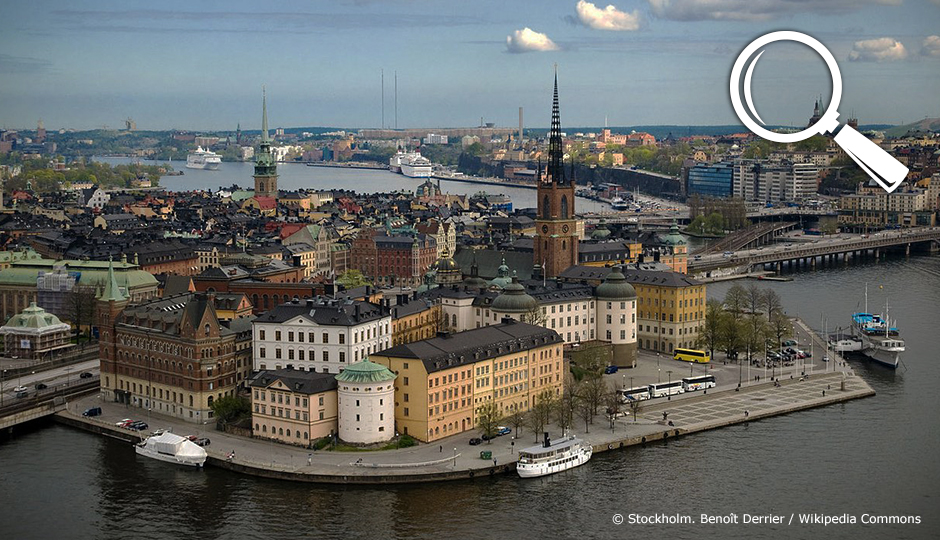Auteur : Agence Science Presse - Maxime Bilodeau
Much has been said about Sweden’s approach since the beginning of the pandemic. Its management of the crisis has been fairly unique and garnered a lot of criticism. Is it a failure, or is the verdict still out?
1) Does Sweden claim to be aiming for herd immunity? False.
Although some people suspect it, the Swedish authorities officially insist, since the beginning of the COVID-19 crisis, that they aren’t pursuing a herd immunity strategy. Such a strategy would let the virus circulate freely so that people are gradually immunized. The Chief Epidemiologist of Sweden’s Public Health Agency, Anders Tegnell, talks instead about a “flexible” approach. This approach is voluntary and based on taking individual responsibility.
Concretely, this means that the Swedish population has never been forced into self-isolation. Only gatherings of more than 50 people, non-essential travel and close contacts with the elderly are forbidden.
Cafés, restaurants and bars have stayed open. So have schools for children under 16 years of age. Telework is encouraged and physical distancing measures are emphasized.
2) Is the COVID-19 fatality rate higher in Sweden than elsewhere? It depends.
At the beginning of June, the Swedish death rate linked to the new coronavirus was 450 deaths per million, according to the Worldometer website. This figure ranks the Kingdom of Sweden among the top 10 countries with the highest death rates linked to COVID-19.
Let’s compare Sweden to its close neighbours, all of which introduced confinement measures. At the beginning of June, it had far more deaths than Denmark (99 deaths per million population), Finland (57) and Norway (44). But it’s doing better than countries where the pandemic was especially deadly, such as Spain (580), the United Kingdom (567) and Italy (555). It’s also outperforming Québec, where the fatality rate at the beginning of June was a little over 550 deaths per million.
But these figures must be considered in relative terms. Every State has its own method of compiling the deaths in its territory. This leads some experts, like epidemiologist Nimâ Machouf, a course lecturer at the Université de Montréal School of Public Health, to take a different approach. She affirms that Sweden must be compared instead to its northern neighbours, where the “demographic composition is similar”.
In an interview with Swedish public radio on June 3, Anders Tegnell seemed to admit the number of deaths was too high. “Clearly there is potential for improvement,” he said.
3) Because there was no confinement in Sweden, does that mean the economy is doing better? Not really.
Strict confinement or not, Swedes certainly changed their everyday lifestyles. According to data published by Google in May, they consumed less and travelled less than before the pandemic. They also deserted their offices.
Among other effects, this sank their economy. In a press release issued at the end of April, the Riksbank, Sweden’s central bank, published its economic forecasts for 2020. It discussed a contraction of the gross domestic product (GDP) ranging from 6.9% to 9.7%, according to two proposed scenarios. One was conservative, the other catastrophic.
“The consequences [of COVID-19] for the economy will depend on the spread of the virus and the duration of the restrictive measures deployed to curb it,” the Riksbank pointed out.
In comparison, Denmark, a neighbouring country of Sweden, forecasts that its economy will contract by 5.3% in 2020. Similarly, Norway expects its GDP to decline by 5.2%.
4) Did the absence of confinement allow a large percentage of the population to acquire immunity? No
Only 7.3% of Stockholm residents had developed antibodies against COVID-19 by the end of April. These are the first results of a study conducted by the Public Health Agency of Sweden (and still in progress). The study was released on May 20.
This rate is far below expectations. Remember that the Swedish ambassador to the United States claimed a month ago that Stockholm would reach “a certain level of immunity”. He even affirmed that about 30% of the capital’s population had already been infected by the new coronavirus. According to the Health Agency, this is clearly not the case.





